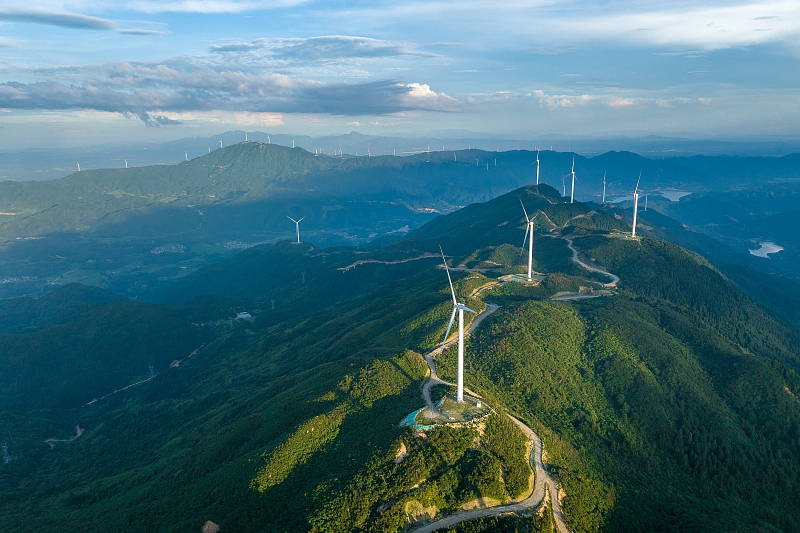China's push for renewable energy transition
- By Tom Fowdy
 0 Comment(s)
0 Comment(s) Print
Print E-mail China.org.cn, July 7, 2022
E-mail China.org.cn, July 7, 2022

As the world's largest industrial and manufacturing base, it's no secret that energy resources are crucial for China. Over the past four decades, the country's economy has grown rapidly, lifting hundreds of millions of people out of poverty. It has also become outstanding in many global industries, thereby boosting both its consumption and demand for energy and exceeding that of any other country.
Given the pressing impact of climate change, countries across the world need to act quickly and make their own efforts to help mitigate the impact of climate change and ensure a sustainable development model. China thereby has to deal with the challenge of not only acquiring ever-increasing amounts of energy in order to continue economic growth but also making sure that its energy stores increasingly come from renewable methods that are sustainable for the environment.
China has so far made remarkable progress in its clean energy transition, becoming one of the biggest investors in solar and wind power in the world. However, 60% of the energy it uses still comes from coal-fired power stations.
In 2020, China set up a goal to reach peak carbon emissions before 2030 and carbon neutrality before 2060. These plans intend to accelerate renewable energy development and reduce the country's reliance on coal as quickly as possible.
This is not an easy task, partly because energy transition has to adapt to become more environmentally friendly in view of the energy resources that industries consume, while not ceding capacity or productivity.
China's consideration is bringing about sweeping changes. The country is set to install a record 156 gigawatts of wind turbines and solar panels this year, according to Bloomberg. This constitutes a 25% jump from the previous record set last year. In its renewable energy development plan during the 14th Five-Year Plan period (2021-25), China aims for renewables to supply 33% of national power consumption and for non-hydro renewables to constitute 18%.
Moreover, Chinese authorities have introduced a raft of measures to boost energy efficiency and reduce carbon emissions. This includes a number of measures to facilitate green growth, including finding ways to reduce the consumption of water needed to run factories by at least 16% from 2020 levels by the end of 2025.
In doing this, China has promoted over 20,000 green products and 4,000 types of equipment for energy and water conservation and comprehensive resource utilization since 2011. In the process, a growing number of companies in low-carbon energy technologies have been established, providing more new jobs.
Yet on its own, this is not enough. China continues its comprehensive energy transition and advocates putting even more resources toward renewable energy development and conservation.

This comes in tandem with the rapid rise of the electric vehicle (EV) industry. According to Wired Magazine, China has become "the center" of the world when it comes to EVs, which it plans to constitute 40% of all vehicles sold in the country by 2030. It also aims to facilitate charging infrastructure to meet the needs of more than 20 million cars, again demonstrating how China is acting as a world leader in the transition to renewables.
China is prevailing against the odds when it comes to the challenges of the 21st century. Its endeavors to improve energy efficiency and accelerate energy transition so as to achieve its ambition of "dual carbon goals," which will lead to an even further boom in low-carbon technologies and a significant decline in fossil fuel utilization in the years to come.
Tom Fowdy is a British political and international relations analyst and a graduate of Durham and Oxford universities. He writes on topics pertaining to China, the DPRK, Britain and the U.S. For more information please visit:
http://www.formacion-profesional-a-distancia.com/opinion/TomFowdy.htm
Opinion articles reflect the views of their authors, not necessarily those of China.org.cn.
If you would like to contribute, please contact us at opinion@china.org.cn.





